dogs of the Dow
description: stock investment strategy based on Dow Jones Industrial index
13 results
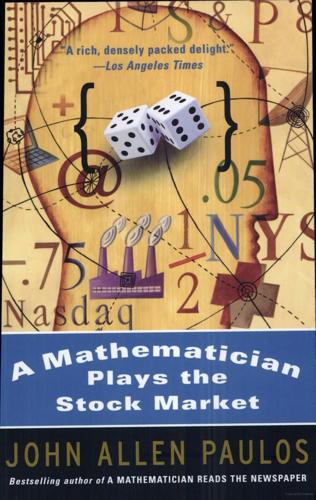
A Mathematician Plays the Stock Market
by
John Allen Paulos
Published 1 Jan 2003
Brian auditors Aumann, Robert availability error average values compared with distribution of incomes risk as variance from averages average return compared with median return average value compared with distribution of incomes buy-sell rules and outguessing average guess risk as variance from average value averaging down Bachelier, Louis Bak, Per Barabasi, Albert-Lazló Bartiromo, Maria bear markets investor self-descriptions and shorting and distorting strategy in Benford, Frank Benford’s Law applying to corporate fraud background of frequent occurrence of numbers governed by Bernoulli, Daniel Beta (B) values causes of variations in comparing market against individual stocks or funds strengths and weaknesses of technique for finding volatility and Big Bang billiards, as example of nonlinear system binary system biorhythm theory Black, Fischer Black-Scholes option formula blackjack strategies Blackledge, Todd “blow up,” investor blue chip companies, P/E ratio of Bogle, John bonds Greenspan’s impact on bond market history of stocks outperforming will not necessarily continue to be outperformed by stocks Bonds, Barry bookkeeping. see accounting practices bottom-line investing Brock, William brokers. see stock brokers Buffett, Warren bull markets investor self-descriptions and pump and dump strategy in Butterfly Economics (Ormerod) “butterfly effect,” of nonlinear systems buy-sell rules buying on the margin. see also margin investments calendar effects call options. see also stock options covering how they work selling strategies valuation tools campaign contributions Capital Asset Pricing Model capital gains vs. dividends Central Limit Theorem CEOs arrogance of benefits in manipulating stock prices remuneration compared with that of average employee volatility due to malfeasance of chain letters Chaitin, Gregory chance. see also whim trading strategies and as undeniable factor in market chaos theory. see also nonlinear systems charity Clayman, Michelle cognitive illusions availability error confirmation bias heuristics rules of thumb for saving time mental accounts status quo bias Cohen, Abby Joseph coin flipping common knowledge accounting scandals and definition and importance to investors dynamic with private knowledge insider trading and parable illustrating private information becoming companies/corporations adjusting results to meet expectations applying Benford’s Law to corporate fraud comparing corporate and personal accounting financial health and P/E ratio of blue chips competition vs. cooperation, prisoner’s dilemma complexity changing over time horizon of sequences (mathematics) of trading strategies compound interest as basis of wealth doubling time and formulas for future value and present value and confirmation bias definition of investments reflecting stock-picking and connectedness. see also networks European market causing reaction on Wall Street interactions based on whim interactions between technical traders and value traders irrational interactions between traders Wolfram model of interactions between traders Consumer Confidence Index (CCI) contrarian investing dogs of the Dow measures of excellence and rate of return and cooperation vs. competition, prisoner’s dilemma correlation coefficient. see also statistical correlations counter-intuitive investment counterproductive behavior, psychology of covariance calculation of portfolio diversification based on portfolio volatility and stock selection and Cramer, James crowd following or not herd-like nature of price movements dart throwing, stock-picking contest in the Wall Street Journal data mining illustrated by online chatrooms moving averages and survivorship bias and trading strategies and DeBondt, Werner Deciding What’s News (Gans) decimalization reforms decision making minimizing regret selling WCOM depression of derivatives trading, Enron despair and guilt over market losses deviation from the mean. see also mean value covariance standard deviation (d) variance dice, probability and Digex discounting process, present value of future money distribution of incomes distribution of wealth dynamic of concentration UN report on diversified portfolios. see stock portfolios, diversifying dividends earnings and proposals benefitting returns from Dodd, David dogs of the Dow strategy “dominance” principle, game theory dot com IPOs, as a pyramid scheme double-bottom trend reversal “double-dip” recession double entry bookkeeping doubling time, compound interest and Dow dogs of the Dow strategy percentages of gains and losses e (exponential growth) compound interest and higher mathematics and earnings anchoring effect and complications with determination of inflating (WCOM) P/E ratio and stock valuation and East, Steven H.
…
Investors sign on too quickly to the hype surrounding fast-growing companies and underestimate the prospects of solid, if humdrum companies of the type that Warren Buffett likes—Coca-Cola, for instance. (I write this in a study littered with empty cans of Diet Coke.) The appeal of value investing tends to be contrarian, and many of the strategies derived from fundamental analysis reflect this. The “dogs of the Dow” strategy counsels investors to buy the ten Dow stocks (among the thirty stocks that go into the Dow-Jones Industrial Average) whose price-to-dividend, P/D, ratios are the lowest. Dividends are not earnings, but the strategy corresponds very loosely to buying the ten stocks with the lowest P/E ratios.
…
Brian auditors Aumann, Robert availability error average values compared with distribution of incomes risk as variance from averages average return compared with median return average value compared with distribution of incomes buy-sell rules and outguessing average guess risk as variance from average value averaging down Bachelier, Louis Bak, Per Barabasi, Albert-Lazló Bartiromo, Maria bear markets investor self-descriptions and shorting and distorting strategy in Benford, Frank Benford’s Law applying to corporate fraud background of frequent occurrence of numbers governed by Bernoulli, Daniel Beta (B) values causes of variations in comparing market against individual stocks or funds strengths and weaknesses of technique for finding volatility and Big Bang billiards, as example of nonlinear system binary system biorhythm theory Black, Fischer Black-Scholes option formula blackjack strategies Blackledge, Todd “blow up,” investor blue chip companies, P/E ratio of Bogle, John bonds Greenspan’s impact on bond market history of stocks outperforming will not necessarily continue to be outperformed by stocks Bonds, Barry bookkeeping. see accounting practices bottom-line investing Brock, William brokers. see stock brokers Buffett, Warren bull markets investor self-descriptions and pump and dump strategy in Butterfly Economics (Ormerod) “butterfly effect,” of nonlinear systems buy-sell rules buying on the margin. see also margin investments calendar effects call options. see also stock options covering how they work selling strategies valuation tools campaign contributions Capital Asset Pricing Model capital gains vs. dividends Central Limit Theorem CEOs arrogance of benefits in manipulating stock prices remuneration compared with that of average employee volatility due to malfeasance of chain letters Chaitin, Gregory chance. see also whim trading strategies and as undeniable factor in market chaos theory. see also nonlinear systems charity Clayman, Michelle cognitive illusions availability error confirmation bias heuristics rules of thumb for saving time mental accounts status quo bias Cohen, Abby Joseph coin flipping common knowledge accounting scandals and definition and importance to investors dynamic with private knowledge insider trading and parable illustrating private information becoming companies/corporations adjusting results to meet expectations applying Benford’s Law to corporate fraud comparing corporate and personal accounting financial health and P/E ratio of blue chips competition vs. cooperation, prisoner’s dilemma complexity changing over time horizon of sequences (mathematics) of trading strategies compound interest as basis of wealth doubling time and formulas for future value and present value and confirmation bias definition of investments reflecting stock-picking and connectedness. see also networks European market causing reaction on Wall Street interactions based on whim interactions between technical traders and value traders irrational interactions between traders Wolfram model of interactions between traders Consumer Confidence Index (CCI) contrarian investing dogs of the Dow measures of excellence and rate of return and cooperation vs. competition, prisoner’s dilemma correlation coefficient. see also statistical correlations counter-intuitive investment counterproductive behavior, psychology of covariance calculation of portfolio diversification based on portfolio volatility and stock selection and Cramer, James crowd following or not herd-like nature of price movements dart throwing, stock-picking contest in the Wall Street Journal data mining illustrated by online chatrooms moving averages and survivorship bias and trading strategies and DeBondt, Werner Deciding What’s News (Gans) decimalization reforms decision making minimizing regret selling WCOM depression of derivatives trading, Enron despair and guilt over market losses deviation from the mean. see also mean value covariance standard deviation (d) variance dice, probability and Digex discounting process, present value of future money distribution of incomes distribution of wealth dynamic of concentration UN report on diversified portfolios. see stock portfolios, diversifying dividends earnings and proposals benefitting returns from Dodd, David dogs of the Dow strategy “dominance” principle, game theory dot com IPOs, as a pyramid scheme double-bottom trend reversal “double-dip” recession double entry bookkeeping doubling time, compound interest and Dow dogs of the Dow strategy percentages of gains and losses e (exponential growth) compound interest and higher mathematics and earnings anchoring effect and complications with determination of inflating (WCOM) P/E ratio and stock valuation and East, Steven H.
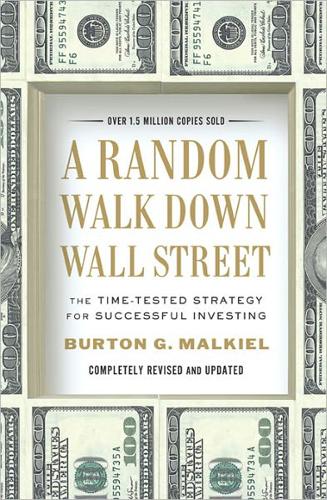
A Random Walk Down Wall Street: The Time-Tested Strategy for Successful Investing
by
Burton G. Malkiel
Published 10 Jan 2011
James O’Shaughnessy tested the theory as far back as the 1920s; he found that the Dogs of the Dow had beaten the overall index by over 2 percentage points per year with no additional risk. The canine contingent of Wall Street analysts raised their ears and marketed many mutual funds based on the principle. By the mid-1990s, more than $20 billion of investment-fund dollars were placed in Dogs of the Dow funds sold by such prestigious firms as Morgan Stanley, Dean Witter, and Merrill Lynch. And then, just as might be expected, success bit the dogs. The Dogs of the Dow consistently underperformed the overall market. As the “Dogs” star Michael O’Higgins opined, “the strategy became too popular” and ultimately self-destructed.
…
POTSHOTS THAT COMPLETELY MISS THE TARGET Some attempts to discredit the unpredictability of the market are so ridiculous that perhaps they should earn the sobriquet of “greater fool” theories. Among these are the Super Bowl and the Hemline indicators, both described in chapter 6. Under close examination, other picturesque potshots also misfire completely. These include the Dogs of the Dow, the January Effect, the “Thank God It’s Monday Afternoon” Pattern, and the Hot News Response. Dogs of the Dow This interesting strategy capitalized on a general contrarian conviction that out-of-favor stocks eventually tend to reverse direction. The strategy entailed buying each year the ten stocks in the Dow Jones 30-Stock Industrial Average that had the highest dividend yields.
…
If You Do Trade: Sell Losers, Not Winners 4. Other Stupid Investor Tricks Does Behavioral Finance Teach Ways to Beat the Market? 11. POTSHOTS AT THE EFFICIENT-MARKET THEORY AND WHY THEY MISS What Do We Mean by Saying Markets Are Efficient? Potshots That Completely Miss the Target Dogs of the Dow January Effect “Thank God It’s Monday Afternoon” Pattern Hot News Response Why the Aim Is So Bad Potshots That Get Close but Still Miss the Target The Trend Is Your Friend (Otherwise Known as Short-Term Momentum) The Dividend Jackpot Approach The Initial P/E Predictor The “Back We Go Again” Strategy (Otherwise Known as Long-Run Return Reversals) The “Smaller Is Better” Effect The “Value Will Win” Record Stocks with Low Price-Earnings Multiples Outperform Those with High Multiples Stocks That Sell at Low Multiples of Their Book Values Tend to Produce Higher Subsequent Returns Does “Value” Really Trump Growth on a Consistent Basis?
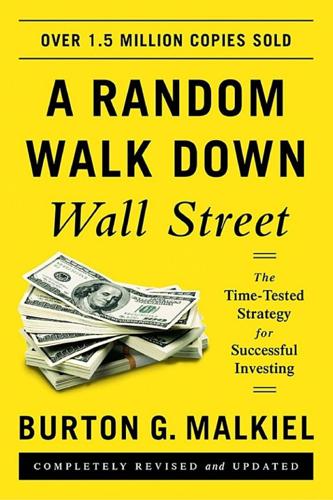
A Random Walk Down Wall Street: The Time-Tested Strategy for Successful Investing (Eleventh Edition)
by
Burton G. Malkiel
Published 5 Jan 2015
James O’Shaughnessy tested the theory as far back as the 1920s; he found that the Dogs of the Dow had beaten the overall index by over 2 percentage points per year with no additional risk. Members of the canine contingent of Wall Street analysts raised their ears and marketed billions of dollars of mutual funds on the basis of the principle. And then, just as might be expected, success bit the dogs. The Dogs of the Dow consistently underperformed the overall market. As the Dogs star O’Higgins opined, “the strategy became too popular” and ultimately self-destructed. The Dogs of the Dow no longer hunt. January Effect A number of researchers have found that January has been a very unusual month for stock-market returns.
…
Some More Elaborate Technical Systems The Filter System The Dow Theory The Relative-Strength System Price-Volume Systems Reading Chart Patterns Randomness Is Hard to Accept A Gaggle of Other Technical Theories to Help You Lose Money The Hemline Indicator The Super Bowl Indicator The Odd-Lot Theory Dogs of the Dow January Effect A Few More Systems Technical Market Gurus Why Are Technicians Still Hired? Appraising the Counterattack Implications for Investors 7. HOW GOOD IS FUNDAMENTAL ANALYSIS? THE EFFICIENT-MARKET HYPOTHESIS The Views from Wall Street and Academia Are Security Analysts Fundamentally Clairvoyant?
…
It turns out that the odd-lotter isn’t such a stupendous dodo after all. A little stupid? Maybe. There is some indication that the performance of odd-lotters might be slightly worse than the stock averages. However, the available evidence indicates that knowledge of odd-lotters’ actions is not useful for the formulation of investment strategies. Dogs of the Dow This interesting strategy capitalized on a general contrarian conviction that out-of-favor stocks eventually tend to reverse direction. The strategy entailed buying each year the ten stocks in the Dow Jones 30-Stock Industrial Average that had the highest dividend yields. The idea was that these ten stocks were the most out of favor, so they typically had low price-earnings multiples and low price-to-book-value ratios as well.
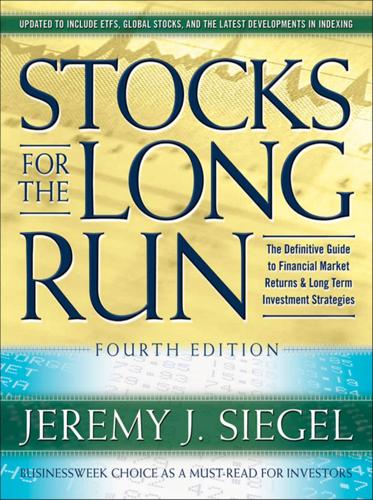
Stocks for the Long Run, 4th Edition: The Definitive Guide to Financial Market Returns & Long Term Investment Strategies
by
Jeremy J. Siegel
Published 18 Dec 2007
CHAPTER 9 Outperforming the Market TABLE 147 9–2 S&P 500 Stocks Sorted by Dividend Yield Dividend Yield Geometric Return Highest High Middle Low Lowest S&P 500 14.22% 13.11% 10.55% 9.79% 9.69% 11.13% Arithmetic Return 15.71% 14.24% 11.71% 11.35% 12.20% 12.39% Standard Deviation Beta Excess Return over CAPM 18.81% 16.22% 16.02% 18.21% 23.17% 16.52% 0.9336 0.8559 0.9085 1.0460 1.2130 1.0000 3.78% 2.86% -0.04% -1.36% -1.68% 0.00% Other Dividend Yield Strategies There are other high-dividend-yield strategies that have outperformed the market. A well-known one is called the “Dogs of the Dow,” or the “Dow 10” strategy, and is chosen from high-yielding stocks in the Dow Jones Industrial Average. The Dow 10 strategy has been regarded by some as one of the simplest and most successful investment strategies of all time. James Glassman of the Washington Post claimed that John Slatter, a Cleveland investment advisor and writer, invented the Dow 10 system in the 1980s.13 Harvey Knowles and Damon Petty popularized the strategy in their book The Dividend Investor, written in 1992, as did Michael O’Higgins and John Downes in Beating the Dow.
…
The strategy calls for investors at year-end to buy the 10 highestyielding stocks in the Dow Jones Industrial Average and to hold them for the subsequent year and then repeat the process each December 31. These high-yielding stocks are often those that have fallen in price and are out of favor with investors. For this reason the Dow 10 strategy is often called the “Dogs of the Dow.” Another natural extension of the Dow 10 strategy is to choose the 10 highest-yielding stocks from among the 100 largest stocks in the S&P 500. The 100 largest stocks in the S&P 500 Index comprise a much higher percentage of the entire U.S. market than the 30 stocks in the Dow Jones Industrial Average. 13 John R.
…
People extrapolate recent trends in stock prices too far in the future. Although there is some evidence that short-term momentum is positive in stock returns, over the longer term many stocks that have done poorly outperform, and stocks that have done well underperform. Another strategy based on out-of-favor stocks is called the Dogs of the Dow or the Dow 10 strategy.32 Dave: There has been so much to absorb from today’s session. It seems like I fell into almost all of these behavioral traps. The comforting news is that I’m not alone and that your counseling has helped other investors. 32 This strategy is discussed in great detail in Chapter 9.
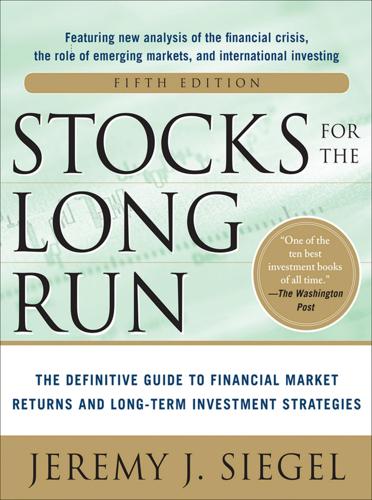
Stocks for the Long Run 5/E: the Definitive Guide to Financial Market Returns & Long-Term Investment Strategies
by
Jeremy Siegel
Published 7 Jan 2014
The annual return of the 100 highest dividend yielders in the S&P 500 Index since the index was founded in 1957 was 3.42 percentage points per year above what would have been predicted by the efficient market model, while the return of the 100 lowest dividend yielders would have had a return that was 2.58 percentage points per year lower. Other Dividend-Yield Strategies There are other high-dividend-yield strategies that have outperformed the market. A well-known one is called the “Dogs of the Dow,” or the “Dow 10” strategy, and is chosen from high-yielding stocks in the Dow Jones Industrial Average. The Dow 10 strategy has been regarded by some as one of the simplest and most successful investment strategies of all time. James Glassman of the Washington Post claimed that John Slatter, a Cleveland investment advisor and writer, invented the Dow 10 system in the 1980s.14 Harvey Knowles and Damon Petty popularized the strategy in their book The Dividend Investor, written in 1992, as did Michael O’Higgins and John Downes in Beating the Dow.
…
The strategy calls for investors at year-end to buy the 10 highest-yielding stocks in the Dow Jones Industrial Average and to hold them for the subsequent year and then repeat the process each December 31. These high-yielding stocks are often those that have fallen in price and are out of favor with investors—which is the reason the strategy is often called the Dogs of the Dow. Another natural extension of the Dow 10 strategy is to choose the 10 highest-yielding stocks from among the 100 largest stocks in the S&P 500. The 100 largest stocks in the S&P 500 Index compose a much higher percentage of the entire U.S. market than the 30 stocks in the Dow Jones Industrial Average.
…
People extrapolate recent trends in stock prices too far into the future. Although there is some evidence that short-term momentum is positive in stock returns, over the longer term many stocks that have done poorly outperform, and stocks that have done well underperform. Another strategy based on out-of-favor stocks is called the Dogs of the Dow or the Dow 10 strategy.34 Dave: There has been so much to absorb from today’s session. It seems like I fell into almost all of these behavioral traps. The comforting news is that I’m not alone and that your counseling has helped other investors. IC: Not only have they been helped, but they have also prospered.
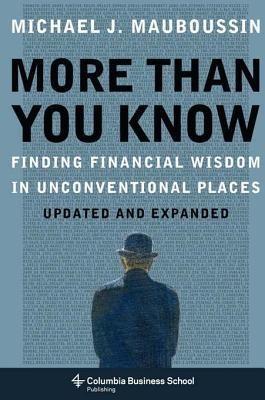
More Than You Know: Finding Financial Wisdom in Unconventional Places (Updated and Expanded)
by
Michael J. Mauboussin
Published 1 Jan 2006
Petersburg and Growth Stock Investing Integrating the Outliers Chapter 33 - The Janitor’s Dream Beyond Newton Sorting Systems The Stock Market as a Complex Adaptive System Using What You’ve Got Chapter 34 - Chasing Laplace’s Demon Evolution Made Me Do It Laplace’s Demon Interpreting the Market Investor Risks Chapter 35 - More Power to You Zipf It The More Things Change . . . Catch the Power Chapter 36 - The Pyramid of Numbers Firm Size, Growth Rates, and Valuation Why Big Fierce Animals Are Rare Find Your Niche Dear CEO: We’ve Made It to the Fortune 50! You’re Fired Extrapolative Expectations Chapter 37 - Turn Tale Hush Puppies and Dogs of the Dow Ah Choo Economists, Meet Mr. Market No Progress in Human Nature Maintain Perspective Chapter 38 - Stairway to Shareholder Heaven I Could Do That Stairway to Shareholder Heaven Making the Art Less Abstract Order and Disorder Conclusion NOTES References Further Reading INDEX Copyright Page A balanced perspective cannot be acquired by studying disciplines in pieces but through pursuit of the consilience among them.
…
Indeed, while mostly avoiding investments in more stocks, Mr. Flynn has been driving to a casino in nearby Connecticut every Monday to play blackjack and poker. “I do better there than I do in the market,” notes Mr. Flynn. —“At Cape Cod Barber Shop, Slumping Stocks Clip Buzz,” The Wall Street Journal, July 8, 2002 Hush Puppies and Dogs of the Dow Sales of Hush Puppies, the nerdish suede shoes with crepe soles, hovered around 30,000 pairs in 1994. Indeed, the manufacturer of the once-popular shoes was considering phasing them out. But then, something remarkable happened: Hush Puppies suddenly became hip in downtown Manhattan. Sales of classic Hush Puppies reached 430,000 pairs in 1995 and over 1.7 million in 1996.
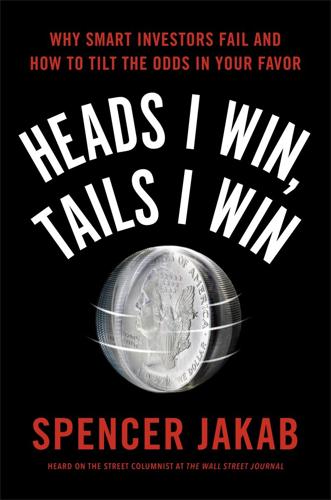
Heads I Win, Tails I Win
by
Spencer Jakab
Published 21 Jun 2016
There are exchange-traded funds that buy spin-offs exclusively, and an index tracking their performance has existed since December 2006. As of this writing it has appreciated nearly 94 percent compared to just 50 percent for the broad stock market. Another long-running, well-known, yet still successful way to profit from what’s out of favor on Wall Street is to buy the “Dogs of the Dow” each January—the ten highest dividend-yielding stocks among the thirty Dow Jones Industrials. These were usually relatively poor performers in the previous year, allowing their dividend yields to rise (as price falls, yield rises as long as payouts are unchanged). Such a strategy pursued over forty-six years produced nearly three percentage points of excess return compared to the index alone.
…
See also alpha (excess return); returns market timing, 3, 30–31, 33, 39, 41–47, 50, 52–56, 58–61, 63, 85, 94, 111, 125 Marketocracy, 225 Markowitz, Harry, 81 Mauboussin, Andrew, 102 Mauboussin, Michael, 99, 101–2, 159–60, 222 McCann, Craig, 202–3 McCrum, Dan, 201–3 McKinsey study, 140 mean variance optimization, 81 media, 152, 186, 199, 229 contrarian articles of, 237–38 and fund managers, 109–10, 116 journalists, 29, 47, 58–60, 99–100, 117–18, 120, 140, 193, 211, 255 and market bloodbaths, 45–47, 60 and market forecasters, 121, 124 report on analysts, 118–20 report on economists, 143–44 scary headlines of, 45–47, 60, 62, 64, 135–36, 232, 234, 237–38, 240, 249 See also specific publications; television shows/stations Meriwether, John, 165, 168–69 Merrill Lynch, 88, 126, 145 Mexico, 86–87 Michaely, Roni, 134–35 Microsoft, 183–84 Miller, Bill, 97–101, 103–5, 109–12, 116, 160, 168, 172 money market funds, 80 Monte Carlo simulation, 77 Morgan Stanley, 131, 181 Morningstar, 78, 105, 150–53, 174–75 mortgage loans, 100–101. See also subprime mortgage loans mutual funds, 32, 69, 102, 112, 137, 149, 221 actively managed, 79, 149–57, 159–60, 174 and “Dogs of the Dow,” 192 and hedge funds, 170, 173–75, 235 and high fees, 149–50, 153, 155–56, 174, 188 high-performing, 111, 151–52, 154 lag the market, 26, 126, 159 losses in, 33, 115, 152 low-cost, 82 origins of, 156–57 passive, 151–53 poor performing, 13, 154–55, 159, 175 ranking of, 150–52 and stock purchases/sales, 60–61, 115–16 successful managers of, 99, 111 See also Vanguard Group MyPlanIQ, 79–80, 83 Nasdaq Composite, 37, 46 National Bureau of Economic Research, 49–50 Ned Davis Research, 89, 226–27 Nenner, Charles, 121–23, 143 Neuberger Berman, 233 Neuberger, Roy, 233 New Century Financial, 198–200 New York Stock Exchange, 182, 233 New York Times, 29, 154 Newsweek, 237 Newton, Isaac, 41 Niederhoffer, Victor, 168–69 Ninja Trading Service, 211 notes, 204–7.
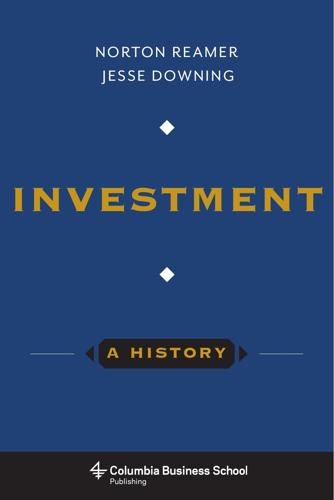
Investment: A History
by
Norton Reamer
and
Jesse Downing
Published 19 Feb 2016
Other work that has sought to shake the foundations of the efficient market hypothesis has centered on predicting 254 Investment: A History returns using various stock characteristics, such as dividend yield and price-to-earnings ratio. The empirical evidence here is also mixed, with some studies advocating such strategies as “Dogs of the Dow” (or dividend-based yield strategies) as generating outsized returns followed by responses showing how this does not hold across all periods, how it may hold for only select aggregations of stocks, or again how one cannot predictably get excess returns by adhering to it. Where Drawer 3 Has Taken Us Perhaps the best way to characterize the effects of drawer 3 is to say it has produced monumentally powerful but often underutilized tools.
…
See also public debt decentralized management approaches, 7 deficit spending, 209–10 defined benefit plans: assets of, 113; liabilities and risks of, 122–23; regulations prohibiting too much stock ownership, 123; shift away from, 117, 295, 302 defined contribution plans, 113–14; growth of, 117, 122–23, 144, 295, 303; premature withdrawal fee for, 114 deflation, 198, 231 “Delta One,” 173 demand curve, 229–30 democratization of investment: accelerator of, 70; byproduct of, 291; definition of, 3; development of, 13, 318; impacts of, 139, 283, 296; links to, 120; manifestations of, 99, 116–17; origins of, 62–63; requirements of, 131; significance of, 7–8; story of, 97–98; success of, 147; theme of, 7, 98, 318; transition to, 61 420 Investment: A History Demosthenes, 24 Department of Labor, 275, 321 depository receipt, for government debt, 140 Depository Trust Company, 149 deregulation: of commission rate, 92; of savings and loan associations, 136 derivatives: leverage and, 214; opportunities with, 92; options pricing formula for, 235–36, 237; partial, 236; pricing, 230, 237; Samuelson on, 234–35; speculation in, 221 Deshima island, 48 Deutsche Börse, 95 Diamond Shamrock, 185–86 Diandang lending institution, 30 Dickens, Charles, 78 Dimmock, Stephen, 169–70 discounted cash flow models, 232–33 discovery, 332 Distilled Company, 181 Distilled Liquors, 164 distressed sales, 220 distressed turnaround operation, 19 diversification, 10; importance of, 229, 258, 319; risk and, 238–40 dividend discount model, of stock valuation, 232 Dodd, David, 250 Dodd-Frank Act, 194, 218, 220, 222 Dodson, James, 132 “Dogs of the Dow” strategies, 254 Dojima Rice Exchange, 45, 60 Donne, John, 121 Doriot, Georges, 274–75 doso (moneylenders), 31 dot-com bubble of 1999–2000, 213 Douglas, William, 166 Dow Jones UBS Commodity Index, 282 Drew, Daniel, 178–79 Drexel Burnham Lambert, 186 Duer, John, 175 Duer, William, 175–77 Dutch East India Company, 66, 85, 97 Dutch joint-stock companies, 64 dynamic hedging, 235–36 Easterlings, 65 East India Companies, 46–47, 49, 61, 69; British East India Company, 66, 326; Dutch East India Company, 66, 85, 97 Eccles, Marriner, 209 Ecclesiastes (Bible), 239 Ecloga laws, 52 economic expansion, 213–14 economies of scale, 75, 298 Economist, 302; Commodity-Price Index, 281 educational endowments, 124–25 Edward III (king of England), 44 Edward VI (king of England), 65 “Efficient Capital Markets: A Review of Theory and Empirical Work” (Fama), 249 efficient frontier, 241 efficient market hypothesis, 249–51, 253 Egypt: interest-free banking institutions in, 38; interest rates in, 23–24; lending in, 22–24 88888 account, 171 Einstein, Albert, 230 Eisenhower, Dwight D., 280 Elizabethan Act of 1571, 36 Employee Retirement Income Security Act (ERISA), 92, 112, 113, 282; impacts of, 292–93; rewriting of, 275 Index 421 endowments, 123–25, 145; educational, 124–25; in Greece and Rome, 56–57, 57; taxes and, 124; university, 257, 271, 296, 328 enforcement, improved, 147 England: Act of 1545, 36; banking in, 70, 73–75; joint-stock companies in, 64–66, 86; stock market in, 86–87; sugar consumption in, 75, 77 English Poor Law of 1601, 100 Enron, 68 Equitable Life Assurance Society, 132 equities markets, 114 equity index funds, 285 equity premium puzzle, 252–53 Erie Railway, 178–79 Erie War, 177–79 ERISA.
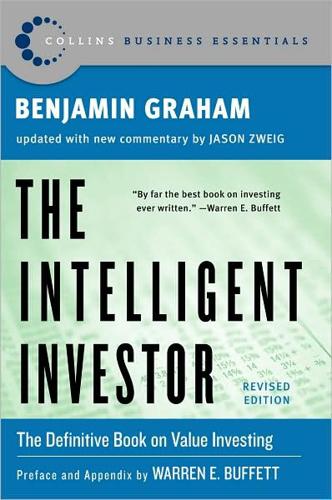
The Intelligent Investor (Collins Business Essentials)
by
Benjamin Graham
and
Jason Zweig
Published 1 Jan 1949
See also specific company Dimson, Elroy direct purchase of stock directors discount brokerage houses Discover Brokerage diversification; and advice; and aggressive investors; and defensive investors; and delisted stocks; and formula trading; and; Graham’s disciples; importance of; and investment funds; and investments vs. speculation; and margin of safety; and market fluctuations; and security analysis dividends: academic criticism of; and advice; and bargains; cumulative or noncumulative; and earnings; and expectations for defensive investors; fixed; and formula trading; Graham’s comments about; and growth; and history and forecasting of stock market; inflation and; and investor-management relations; and margin of safety; and market fluctuations; overview about; and “payout ratio,”; and per-share earnings; and performance (1871–1970); and portfolio policy for aggressive investors; and portfolio policy for defensive investors; and price; proper stock; record of paying; reinvestment of; of secondary companies; and security analysis; special; and speculation; and stock selection for aggressive investors; and stock selection for defensive investors; stock split and; taxes on; total dollar amount of, by U.S. stocks; and volatility; who pays; Zweig’s comments about. See also yield; specific company or type of security Dixon, Richard Dodd, David; See also Security Analysis (Graham and Dodd) “Dogs of the Dow,” dollar-cost averaging, Dollar General stores Donaldson, Lufkin & Jenrette Donnelley (R.R.) & Sons dot.com stocks Double Click Inc. Dover Corp. Dow Chemical Co. Dow Jones Industrial Average (DJIA): aggressive investors and; and bargains; “best” stocks in; and comparison of four listed companies; defensive investors and; and dividend return on common stocks; in early 1970s; and expectations for investors; and formula trading; growth of; and growth stocks; and history and forecasting of stock market; inflation and; and investment funds; and market fluctuations; and per-share earnings; and Raskob’s prescription; rise of (1915–70); and security analysis; and selection of stocks; and unpopular large companies; yield of stocks (2003) on.
…
* Drexel Firestone, a Philadelphia investment bank, merged in 1973 with Burnham & Co. and later became Drexel Burnham Lambert, famous for its junk-bond financing of the 1980s takeover boom. † This strategy of buying the cheapest stocks in the Dow Jones Industrial Average is now nicknamed the “Dogs of the Dow” approach. Information on the “Dow 10” is available at www.djindexes.com/jsp/dow510Faq.jsp. * Among the steepest of the mountains recently made out of molehills: In May 1998, Pfizer Inc. and the U.S. Food and Drug Administration announced that six men taking Pfizer’s anti-impotence drug Viagra had died of heart attacks while having sex.
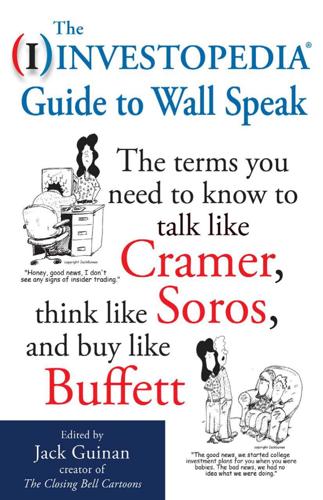
The Investopedia Guide to Wall Speak: The Terms You Need to Know to Talk Like Cramer, Think Like Soros, and Buy Like Buffett
by
Jack (edited By) Guinan
Published 27 Jul 2009
The Investopedia Guide to Wall Speak 315 Investopedia explains Value Stock A value investor believes that the stock market is often inefficient and that it is possible to find companies trading for less than what they actually may be worth. One popular way to identify value stocks is to check the “Dogs of the Dow” investing strategy: buying one of the 10 highest dividend-yielding stocks on the Dow Jones at the beginning of each year and adjusting it every year thereafter. Related Terms: • Earnings • Price-to-Book Ratio—P/B Ratio • Value Investing • Growth Stock • Style Variable Cost What Does Variable Cost Mean?

Early Retirement Extreme
by
Jacob Lund Fisker
Published 30 Sep 2010
Still, plotting for all possible historical periods shows how things have played out historically. This exercise can be repeated for different markets (domestic equity, international equity, commodities, real estate, timber, etc.) and for different investment methods (buy and hold, dividends, Dogs of the Dow, etc.). It will, however, quickly become clear that there are limits to how much the model can be fitted to the data. The objective of this exercise isn't to get a numerical value, but to get a sense of possible future scenarios, assuming that the future will likely repeat the past in one way or another.
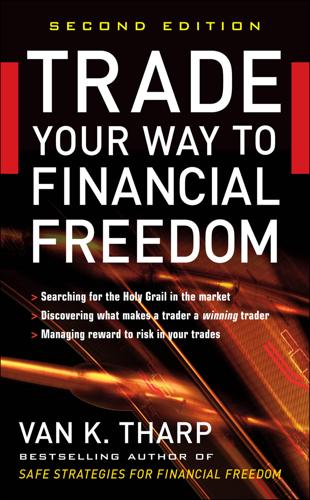
Trade Your Way to Financial Freedom
by
van K. Tharp
Published 1 Jan 1998
That’s an example of using logic to determine when (and when not) to use a system.4 Furthermore, when the Motley Fool Web site introduced this simple technique to millions of investors, you can imagine what happened: many, many investors were focusing their efforts on just four stocks. But how can the “dogs of the Dow” remain a viable strategy if everyone is buying four specific stocks? The answer is that it can’t, and that’s probably why the strategy no longer works. Market Selection The second phase of entry is your selection of what markets you should trade. What qualities must a market have before you want to be a part of it?

The Age of Surveillance Capitalism
by
Shoshana Zuboff
Published 15 Jan 2019
This translated into 76 percent of all desktop searches and 96 percent of mobile searches in the US and corresponding shares of 87 percent and 95 percent worldwide. 91. Roben Farzad, “Google at $400 Billion: A New No. 2 in Market Cap,” BusinessWeek, February 12, 2014, http://www.businessweek.com/articles/2014-02-12/google-at-400-billion-a-new-no-dot-2-in-market-cap. 92. “Largest Companies by Market Cap Today,” Dogs of the Dow, 2017, https://web.archive.org/web/20180701094340/http://dogsofthedow.com/largest-companies-by-market-cap.htm. 93. Jean-Charles Rochet and Jean Tirole, “Two-Sided Markets: A Progress Report,” RAND Journal of Economics 37, no. 3 (2006): 645–67. 94. For a discussion on this point and its relation to online target advertising, see Katherine J.